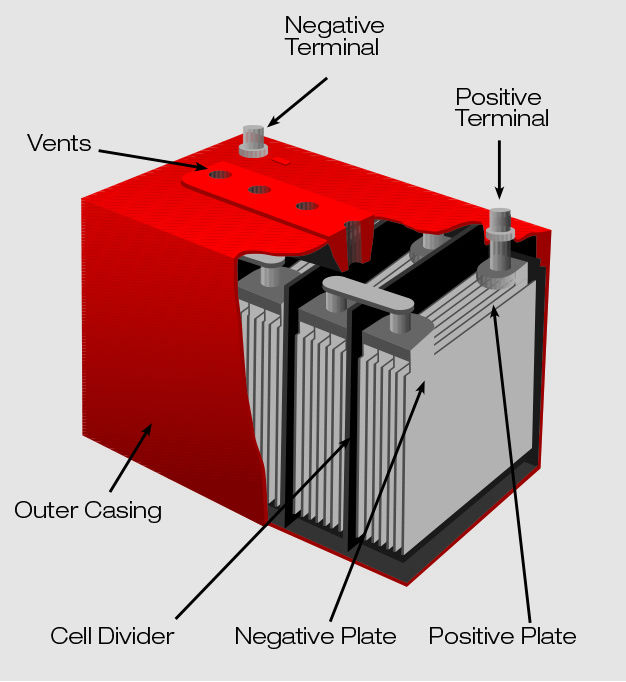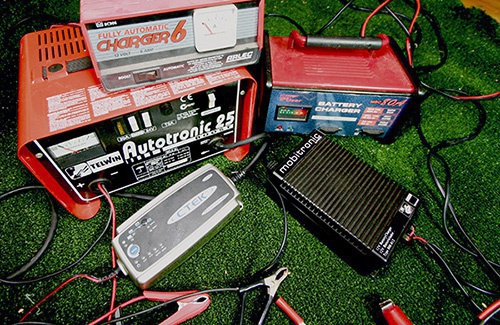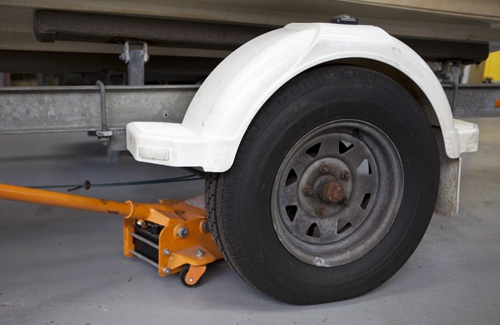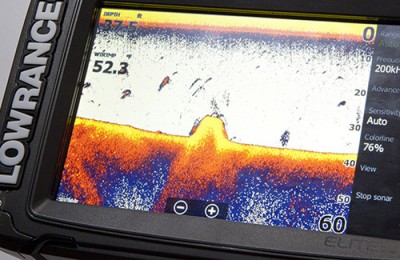This is the second instalment of a three part series on batteries. To ensure you get the right battery for the job, this article will take you through the different battery types and their intended application.
 Batteries are a part of our life whether it’s in the car or boat, and in both applications we rely on them a hell of a lot. In a boat they can be a matter of life and death so having the right battery and one that is reliable and in good condition is essential.
Batteries are a part of our life whether it’s in the car or boat, and in both applications we rely on them a hell of a lot. In a boat they can be a matter of life and death so having the right battery and one that is reliable and in good condition is essential.
There are different types of batteries and they all have different uses, however the most common type for boats and cars is a 12 volt lead acid battery. The other types are Gel Cell or AGM, Maintenance free sealed batteries, calcium batteries which is basically just another type of lead acid and then there are the super expensive and light weight Lithium range of batteries
For this article we will be looking at only lead acid type 12 volt batteries, but most of the information will be applicable to the other types of batteries, except the Lithium batteries, they operate under their own set of unique rules and special battery chargers so we will leave them for a time when they are a bit more affordable.
There are three main types of 12 volt lead acid batteries:
Automotive or Cranking Batteries
These batteries, as the name suggests, are for starting motors. They are designed to have a large draw from a starter motor for a short period of time. Once the motor is running the alternator will quickly restore the used voltage to the battery.
Deep Cycle
Deep cycle batteries are basically designed to deliver power over a long period. These batteries are able to be discharged a lot more than a cranking battery and not suffer the adverse or shortened life that a cranking battery would if continuously used as a power source.
Marine Batteries
Marine batteries are a type of hybrid between a deep cycle battery and a cranking battery. They are designed to be used as a cranking battery to start the out board or inboard motor and a deep cycle battery to run equipment like bilge pumps, echo sounders, GPS units as well as all of the other accessories we run while the motor is switched off.
Why is using the correct battery type so important?
Trying to use batteries for applications outside of what they were designed to do will dramatically shorten the life of the battery. For instance if you were to try and use a cranking battery as a deep cycle battery to run a fridge or electric motor, the battery would probably be dead before it has been recharged thirty times.
Likewise if you were to try and use a deep cycle battery as a cranking battery, life of the battery would be drastically reduced. In the event of an emergency however, do not think twice about starting a motor off a deep cycle battery as it will handle this job but it was never designed to do it over and over again.
Buying a battery suited to the application may seem expensive at the time but if you use the wrong battery then chances are it will be costing you a lot more in the long run.
Battery Maintenance
Getting the right battery for the required job is really important, but unfortunately with batteries it doesn’t stop there. Battery maintenance is critical to keep your battery in its best possible condition. The most basic thing to remember is to keep your battery topped up with distilled water so that the plates are covered at all times. If these plates are exposed to air they will become subject to sulphation which will effectively lock and stop the battery working to full capacity. Never use anything other than distilled water and do not top up batteries with battery electrolyte (acid). The electrolyte or acid will not evaporate as it is only the water content that evaporates so there is no need to replace it unless the acid has actually spilled out of the battery.
Batteries Part 1 – 12v, 24v and 36v
Did you miss our first installment? Find out more about battery voltage and linking in Part 1 of our series on Batteries.
Batteries Part 3 – Battery Charging
Want to learn more about the different types of battery chargers and how to ensure your battery lasts as long as it should? Check out Part 3 in our series on batteries!
Important Safety Information
- Batteries contain sulphuric acid! Handle with caution and wear protective gloves, glasses or goggles when dealing with them.
- Batteries contain highly flammable gasses so sparks, smoking and naked flames around a battery should be avoided.
- One more important thing to remember is that if you have a battery spill, never allow the electrolyte to mix with salt water. These two when mixed will give off chlorine gas which can KILL you!
Important Tips
- Keeping the top of the battery clean and free of moisture is very important. If the top of the battery is dirty and or moist then it will be losing its charge through a tiny amount of electricity finding its way across the top of the battery to the other terminal. This effectively will use power as if it was actually plugged into a very small electrical device.
- Battery terminals should be kept free of corrosion and dirt as well. If you see corrosion on terminals they should be cleaned with a brass wire brush and given an application of light grease to prevent the corrosion from returning. There are specific terminal greases available for this application in aerosols or you can use non metallic grease like petroleum jelly.
- Keeping batteries when they are not being used in a charged state is also very important. In fact if you use a battery and partly drain its charge it should be recharged within 24 hours so as to not damage the battery. It goes on from there too! If you leave a battery for a month then you can be certain that it will have lost part of its charge, so to keep a battery in top condition it should have a top up charge put into it every month just to make sure it is kept in a fully charged state.
- Lead acid batteries should never be completely run flat! Once again if this is done it will damage the battery and greatly reduce its life expectancy. For different batteries there are different guidelines as to what voltage is too low. As a general rule of thumb however it would seem that if you draw down no more than 60% of the batteries capacity it should be ok.
- If you are unsure about anything to do with your battery it is wise to err on the side of caution and to call someone who knows what they are talking about. The place where you bought your battery from is a good place to start. If they have no idea what you are talking about then ring around until you find someone that does and consider them the next time you need to replace your battery.
- Batteries can be very expensive but if looked after correctly they can be relied upon for many years of faithful service. It is a bit of effort but it will be well worth it in the long run.
- More batteries have their life cut short purely due to poor recharging techniques. Don’t miss our next article on battery charging for some great tips on how to make sure your battery lasts as long as possible.










